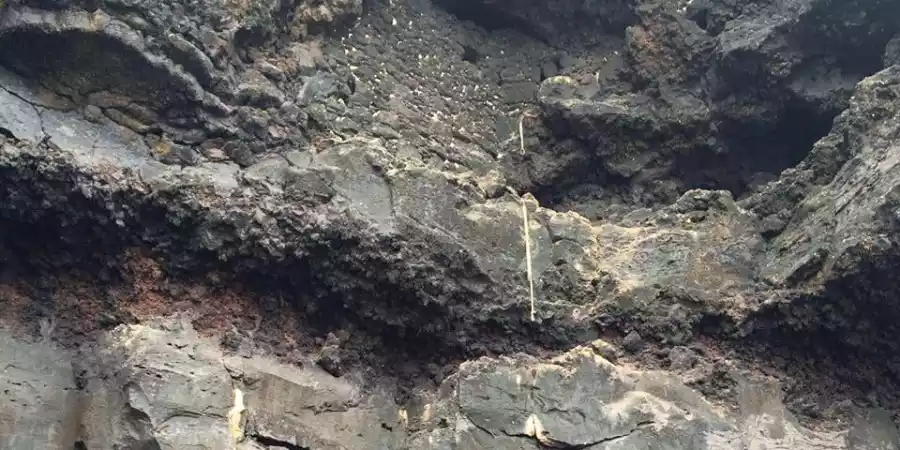
Located in the Lanzaroteño municipality of Tinajo, in the Los Chuchillos Cliff area, is the mouth of the Cueva de Doña Ana Viciosa. Although more than a cave, it is a hollow in the cliff that the ancient settlers fortified to protect themselves from pirate attacks, so frequent at that time.
The arrival to this place can be done from the town of La Santa, through a path that runs through a bad country area. After leaving behind Montaña Bermeja and, further on, the small hamlet of La Laja del Sol, we find a cliff where, if we make a great visual effort, we can see There are some small white spots that give it away: we are in front of Ana Viciosa's cave.
It is a natural crack suspended at a height of about 12 meters, perfectly camouflaged and barely perceptible, which has a wall of stone and lime that protects it.
The entrance is located in the same wall of the cliff, which is accessed through the base, once there you can see the entrance with its stone wall.
To access the interior you need climbing knowledge since the wall that leads to the entrance is at a good vertical of about 10 meters, quite dangerous, as the rock is quite decomposed in sections.
Inside we find a fairly large cavity, with the floor covered with excrement, by the multitude of pigeons, shearwaters and seagulls that have their nests there and another small gallery strong> that will lead to the outside through a small window created for the defense of its inhabitants
The viewsfrom the cave entrance are impressiveover the sea as well as the nooks and crannies formed by marine erosion.
It is known that this cave was used, like the Cueva de los Verdes, as a refuge-fortress, since it also offered, despite the harshness of the sea in the area, the possibility of exiting through the coast.
The name of this cave is linked to an ancient legend. Around 1650, the legendary Ana Viciosa, lady of Monta�a Clara and wife of Governor Juan de Leon Moxica, was practically the owner of the entire area. It is said that the silent lady had romantic encounters with young peasants in the cave, whom she would later gratify by freeing them or giving them a piece of her land.